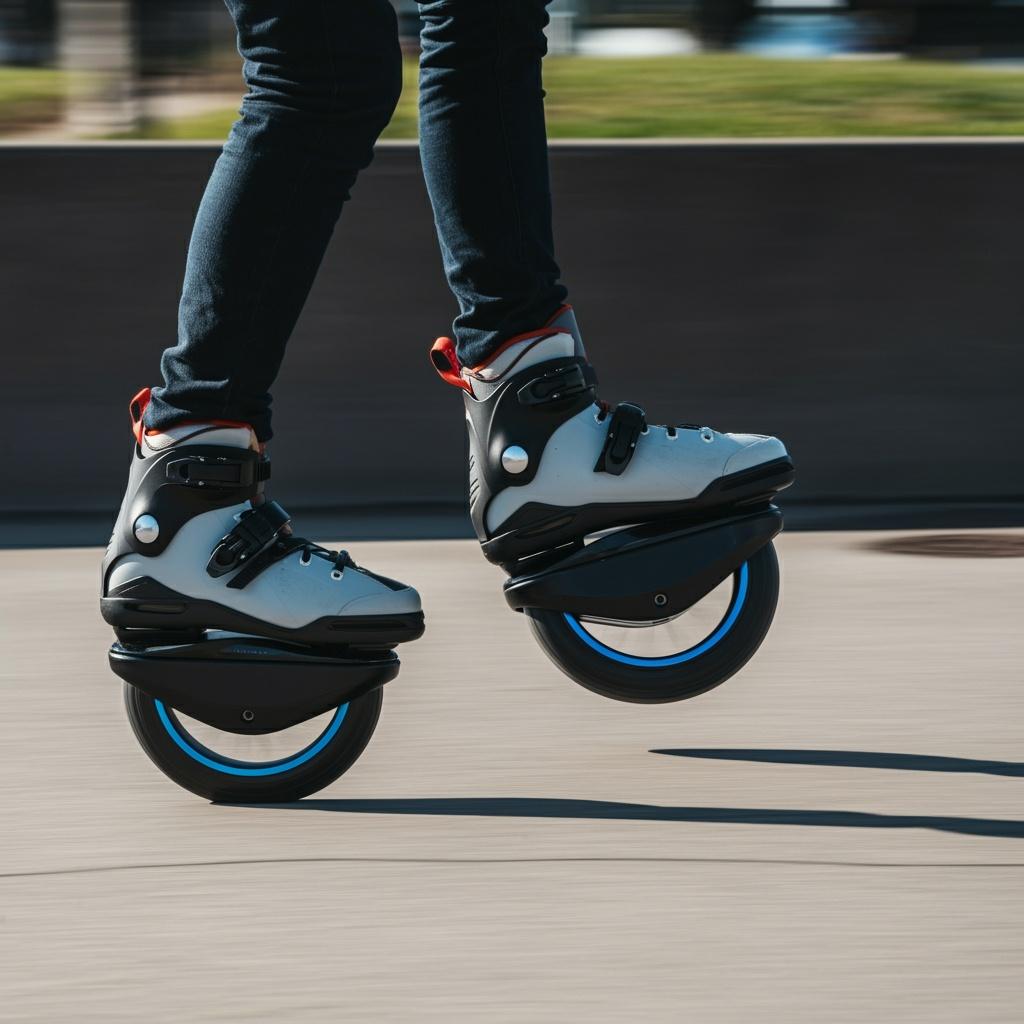Understanding Boardless Skateboards
Boardless skateboards represent an innovative shift in the skateboarding landscape, providing an alternative to traditional skateboards that have primarily relied on a solid deck for both support and balance. These revolutionary devices eliminate the conventional deck, offering a unique riding experience that focuses on fluid movement and dynamic steering capabilities. In essence, boardless skateboards are designed to harness the principles of physics and mechanics to enable riders to navigate their surroundings with ease, employing distinct components for balance and control.
At the heart of a boardless skateboard's design are mechanisms such as gyroscopic sensors, small wheels, or platforms that allow for a more balanced stance. Riders can shift their weight and lean in different directions to steer, which significantly enhances the freedom of movement. The absence of a rigid deck permits greater flexibility, enabling smoother transitions and the ability to perform tricks that are not feasible on traditional boards. This innovative structure caters to a variety of riding styles and preferences, attracting both seasoned enthusiasts and newcomers to the sport.
The evolution of skateboarding technology has seen a significant transformation over the years, from wooden planks to advanced materials and designs. The advent of electric skateboards and hoverboards laid the groundwork for concepts like boardless skateboards, as they introduced new dynamics into the riding experience. By focusing on weight distribution and balance without a conventional deck, boardless designs showcase the latest in engineering and creative thought. As skateboarding continues to evolve, the emergence of boardless options signifies a noteworthy leap towards embracing modern technology while preserving the core essence of this beloved sport.
$99.00
4.51 out of 5 starsOrbitwheel Skates for Fun and Adventure
Experience the thrill of gliding effortlessly while exploring urban landscapes or just having a blast with friends
Product information
Product Review Score
Product links
The Mechanics Behind Boardless Skateboards
Boardless skateboards represent a significant shift in the design and engineering principles of personal mobility devices. At the core of their functionality is the innovative propulsion methods employed to replace the traditional skateboard deck. Predominantly, boardless skateboards leverage electric motors to facilitate movement. These motors, strategically placed near the wheels, provide the necessary torque while maintaining a lightweight design ideal for agility and responsiveness. Through advanced sensor integration and battery technology, these electric systems enable riders to accelerate and decelerate smoothly, adapting to various terrains with ease.
Another aspect worth noting is the use of gravity-based systems in some boardless designs. Such systems capitalize on the natural force of gravity to propel the rider forward, creating a unique riding experience that differs significantly from conventional skateboarding. Riders can navigate inclines and declines effortlessly, showcasing the versatility of this approach. These systems often incorporate sophisticated gearing and pulley mechanics that effectively convert gravitational energy into forward motion.
Weight distribution is crucial in achieving balance and stability in boardless skateboards, especially given their lack of a traditional platform. Manufacturers focus on the strategic placement of materials and components to maintain an optimal center of gravity. Lightweight materials, such as carbon fiber and aluminum, are commonly used to construct the frame and propulsion units, ensuring durability without sacrificing performance. Additionally, many boardless skateboards are designed with dual-wheeled configurations, which enhance stability by distributing the rider's weight across multiple points, mitigating the risk of tipping.
As the technology behind boardless skateboards continues to evolve, the interplay of engineering principles and innovative materials will likely redefine what is possible in the realm of personal transportation.
Advantages and Disadvantages of Boardless Skateboards
Boardless skateboards have become a subject of interest among skating enthusiasts and beginners alike. These innovative alternatives to traditional skateboards offer distinct advantages and unique riding experiences. One major benefit is the increased maneuverability they provide. The absence of a fixed board allows riders to execute sharp turns and slides with greater ease, making them particularly appealing for those who enjoy freestyle skating or navigating through crowded urban environments.
Another advantage of boardless skateboards is their portability. Without the bulk of a traditional board, these skates are lightweight and easier to carry. They can conveniently fit into small bags or backpacks, offering riders the freedom to travel without the hassle of managing a larger skateboard. This feature is particularly beneficial for students and commuters, as it eliminates the need to search for parking space or storage when arriving at their destination.
Additionally, boardless skateboards are often more accessible to beginners. Their simpler design can encourage novice riders to learn basic skating skills without the intimidating aspects of balancing on a traditional board. The learning curve is less steep, which can foster confidence in new skaters as they quickly adapt to riding.
However, potential drawbacks must also be considered. Speed limitations can occur with boardless skateboards since they may not offer the same propulsion as a traditional board. Riders may find they cannot achieve the same velocity, which could limit their experience. Moreover, maintenance can be a unique challenge as the mechanics involved may require careful attention to keep them functioning optimally.
In conclusion, while boardless skateboards present an innovative way to experience skating, they come with their own set of pros and cons. Riders should carefully evaluate their preferences and skating styles before making a decision, weighing the benefits of maneuverability and portability against any potential drawbacks in speed and maintenance.
Future Trends in Skateboarding Technology
The evolution of skateboarding has consistently been linked to technological innovation, and boardless skateboards represent a significant leap forward in this ongoing progression. As urban landscapes continue to evolve, the demand for adaptable and efficient modes of transportation is on the rise. Boardless skateboards seamlessly align with these needs by offering a versatile alternative to traditional boards. Emerging trends indicate that advancements in materials and design will play a pivotal role in shaping the future of this mode of transportation.
One of the most expected developments in boardless skateboarding technology is the integration of lightweight, durable materials. Innovations such as carbon fiber and advanced composites are anticipated to enhance the structural integrity and performance of these devices. In addition, the introduction of smart technology—such as integrated sensors and connectivity features—aims to enhance user experience by providing real-time feedback and personalized performance metrics. These innovations could deepen rider engagement and expand the possibilities for custom configurations.
As boardless skateboards gain traction, it is also essential to consider how these devices might influence urban mobility. They present an environmentally friendly alternative to more conventional transport methods, potentially reducing congestion and promoting sustainability. Furthermore, the adaptability of boardless designs may cater to a diverse range of users, encouraging mobility across different demographic groups. The evolving skate culture may embrace these devices as more than recreation tools, incorporating them into everyday life and transportation.
In summary, the future of boardless skateboarding is poised for exciting advancements that intersect technology, materials, and cultural shifts. By anticipating and understanding these trends, the skateboarding industry can better prepare for a landscape where traditional boards coexist with innovative alternatives, shaping a new era in both recreational activities and urban commuting.








